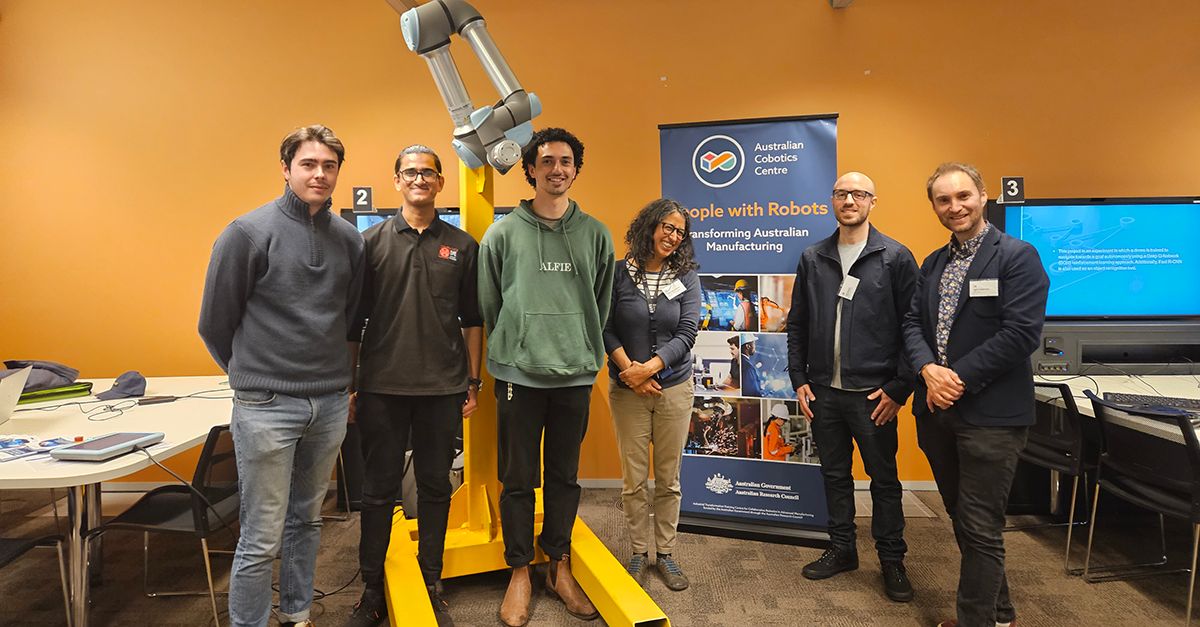
The Australian Cobotics Centre has some incredibly E.P.I.C. researchers. Each month we will be profiling a different researcher.
Nisar Ahmed Channa is a PhD Researcher in the Human-Robot Workforce research program at the Australian Cobotics Centre. His research interests lie primarily in the areas of technology and human resource management, industry 4.0, and organisational behaviour.
We interviewed Nisar recently to find out more about why he does what he does.
-
Tell us a bit about yourself and your research with the Centre?
I am a PhD researcher working on program 5.2: Manufacturing jobs of the future. This program aims to explore current state of literature on Cobots-workforce nexus, challenges associated with adoption of Cobots for both human workers and manufacturing companies, and implications of Cobots for manufacturing companies. My research helps to address challenges associated with the adoption of Cobots in manufacturing and is of vital importance for both academics and policy makers for workforce policies and practices needed to manage human and non-human resources. Recently, we have completed two studies on the current state of industry, speculative, and commentary sources in addressing the impact of Cobots on future jobs and employment. As a result of this, we developed a framework which helps manufacturing companies to enhance their organizational capabilities to adopt Cobots. The outcomes of this program will pave the way for Cobots to supplement human workers in assembly lines.
-
Why did you decide to be a part of the Australian Cobotics Centre?
The main reason behind this was the fact that Australian Cobotics Centre provide me with an opportunity to work with prominent scholars in this area and to pursue my research interests in this field. Working with centre will also allow me to interact with the industry and to get firsthand knowledge about the workforce issues in manufacturing sector and to work on solutions to those issues. It will be an opportunity to contribute into an effort to enhance manufacturing capacity and increase Australia’s manufacturing potential.
-
What project are you most proud of throughout your career and why?
One of the projects on which I worked during my masters was on how organizations going through adversities and uncertainties caused by changes in external environments can bounce back from such situations and remain competitive by developing capacity of resilience through strategic alignment of resources. At that time, the industry was going through a variety of challenges caused by global economic crises. This was one of the initial attempts endeavoured by the academia to provide policy guidelines to industry and government on how to tackle such crises and to remain competitive. I am further expanding this work in my PhD and research I am doing with ACC.
-
What do you hope the long-term impact of your work will be?
The research I am doing with ACC will lead to address issues related with adoption of Cobots in manufacturing industry. To deal with issues related to unavailability of skilled workforce, manufacturing companies are automating their manufacturing processes and adopting Cobots to meet the unavailability of skilled workforce. However, the adoption of Cobots in manufacturing brings new challenges in form of resistance from employees and workforce policies and practices needed to manage human and non-human resources. I am optimistic that my work will help Australian manufacturing companies to address these challenges associated with adoption of Cobots.
-
Aside from your research, what topic could you give an hour-long presentation on with little to no preparation?
Apart from my current research at ACC, history is a topic which always fascinate me. I can easily present on topics like political history of South Asia for hours.




